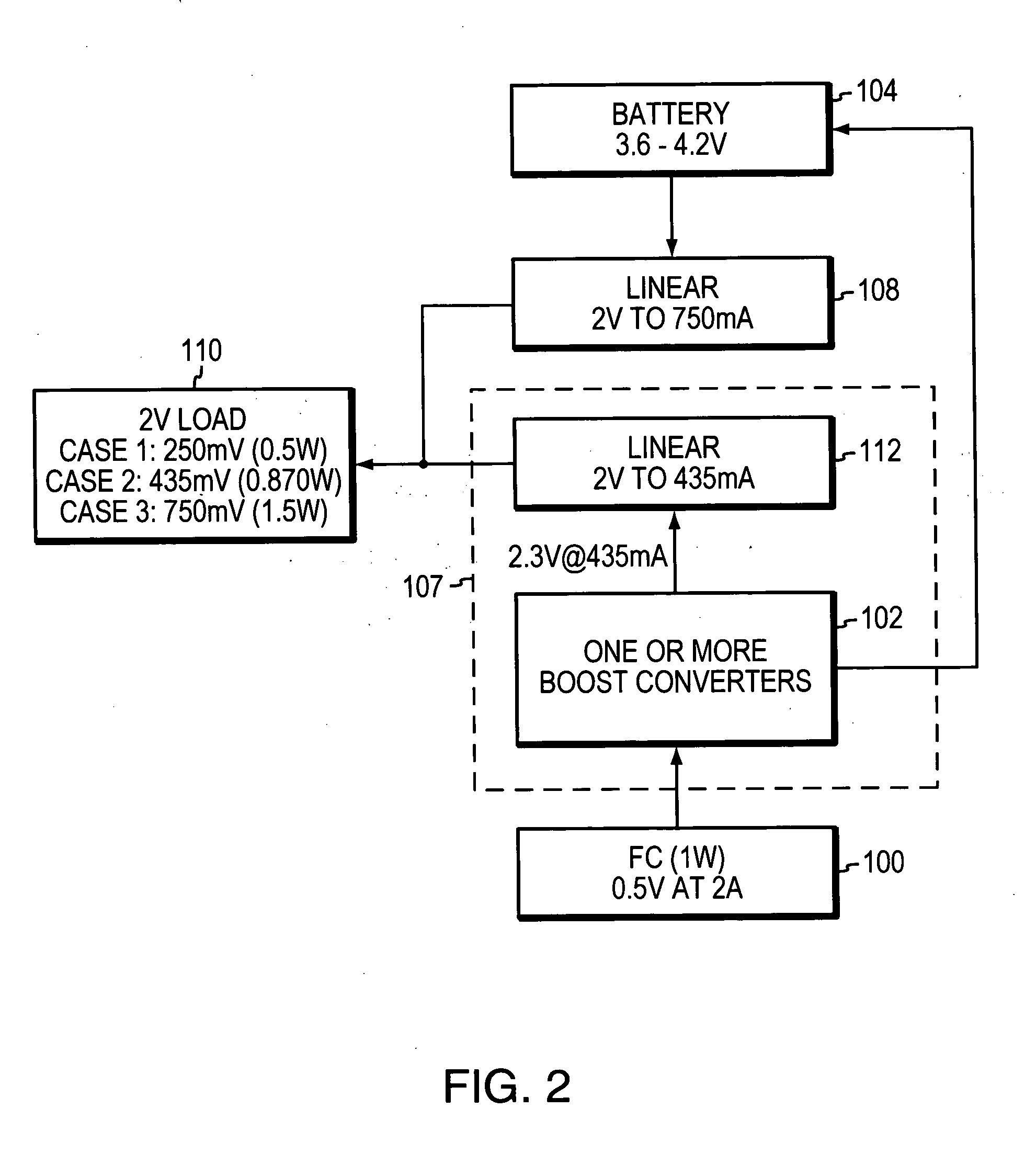Fuel cell charger interface with multiple voltage outputs for portable devices
a fuel cell charger and portable device technology, applied in the direction of electrochemical generators, secondary cell servicing/maintenance, transportation and packaging, etc., can solve the problem of longer runtime for a given amount of fuel, and achieve the effect of facilitating a fast powering of auxiliary converters
- Summary
- Abstract
- Description
- Claims
- Application Information
AI Technical Summary
Benefits of technology
Problems solved by technology
Method used
Image
Examples
Embodiment Construction
[0023]FIG. 1 illustrates a schematic block diagram of fuel cell interface combination in accordance with an illustrative embodiment of the present invention. More specifically, a fuel cell 100 may be any suitable fuel cell such as that described in commonly owned U.S. Pat. No. 6,981,877 of Ren et al., which issued on Jan. 3, 2006, which is presently incorporated herein by reference in its entirety. The fuel cell is coupled to a boost converter 102, which may be any suitable DC-DC converter readily available to those skilled in the art, or may be a DC-DC converter in accordance with commonly owned U.S. patent application Ser. No. 11 / 353,755 for a FUEL CELL BASED RECHARGEABLE POWER PACK SYSTEM AND ASSOCIATED METHODS FOR CONTROLLING SAME, of Leach et al., which was filed on Feb. 14, 2006, which is presently incorporated herein by reference in its entirety. The boost converter 102 forms part of an interface 106, which provides power directly to a load 110 in accordance with the inventio...
PUM
| Property | Measurement | Unit |
|---|---|---|
| voltage | aaaaa | aaaaa |
| voltage | aaaaa | aaaaa |
| output voltage | aaaaa | aaaaa |
Abstract
Description
Claims
Application Information
 Login to View More
Login to View More - R&D
- Intellectual Property
- Life Sciences
- Materials
- Tech Scout
- Unparalleled Data Quality
- Higher Quality Content
- 60% Fewer Hallucinations
Browse by: Latest US Patents, China's latest patents, Technical Efficacy Thesaurus, Application Domain, Technology Topic, Popular Technical Reports.
© 2025 PatSnap. All rights reserved.Legal|Privacy policy|Modern Slavery Act Transparency Statement|Sitemap|About US| Contact US: help@patsnap.com



